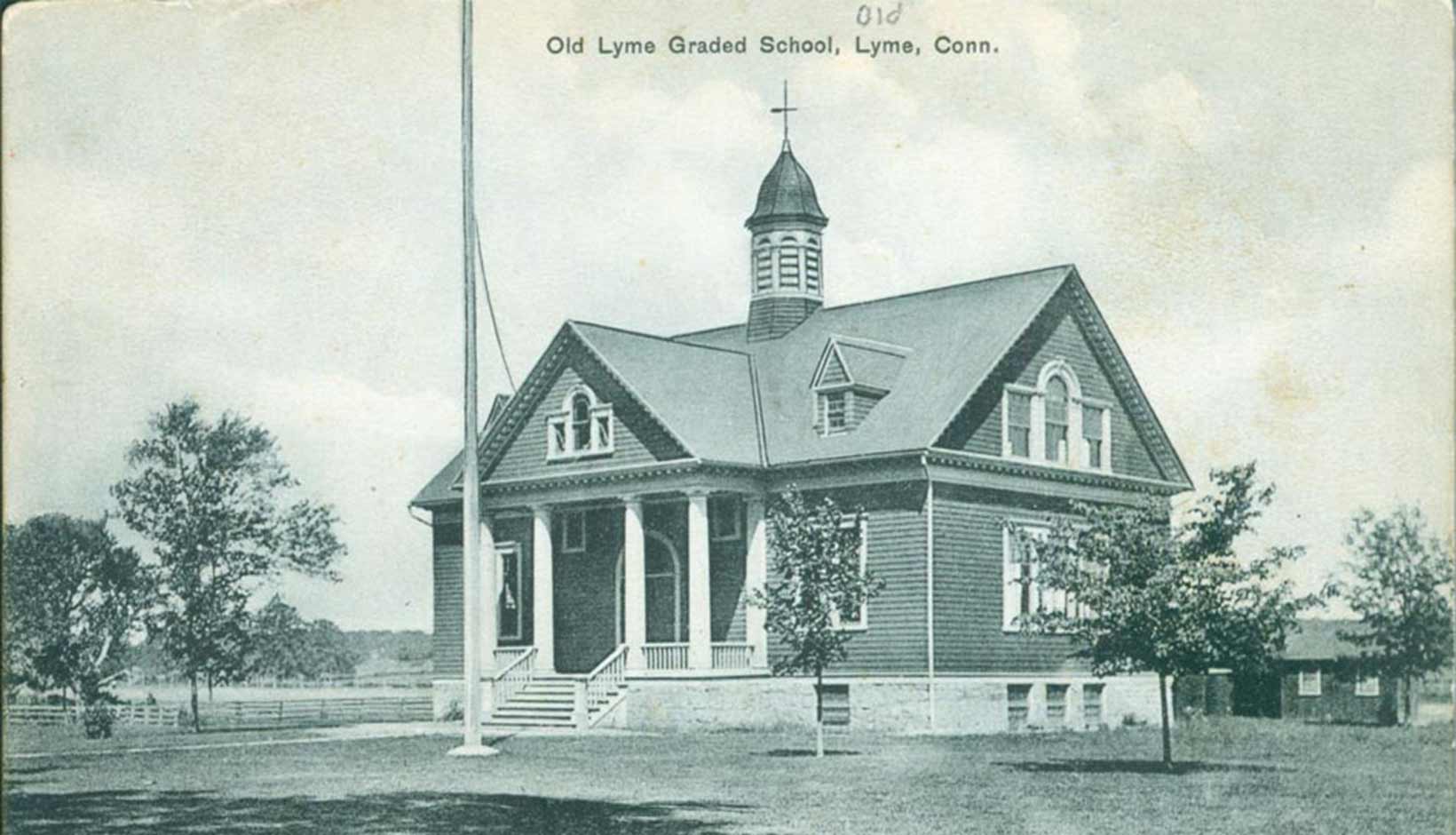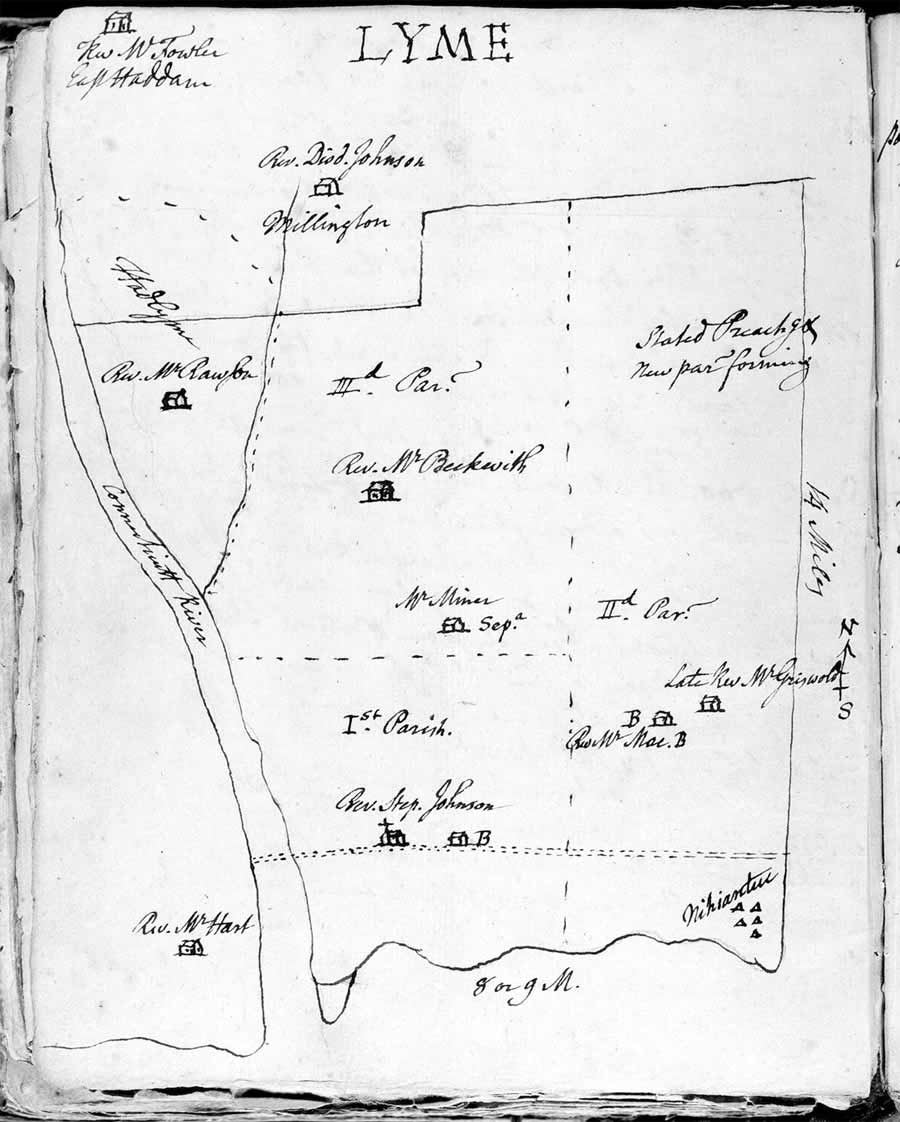Learn
The Lymes
- The Museum will be closed Sunday, April 9 in observance of Easter.
Evolution of a Place Name
Evolution of a Place Name
Place names change over time as boundaries move, communities diverge, and identities shift. The places variously called Lyme acquired different names whenever the town’s geographical outlines were reconfigured. At first the expanse of woodland, meadow, and salt marsh across the Connecticut River from the Saybrook Colony’s original settlement was referred to simply as the “Quarter on the East Side of the River.” The separate town of Lyme resulted from an amicable agreement, known as the “Loving Parting,” that set what had previously been East Saybrook apart on February 13, 1665.
A century later when Ezra Stiles (1727-1795), a minister and academic who became president of Yale, drew a map of Lyme in 1768, the town had divided into four distinct ecclesiastical societies.
Further separations occurred as the population dispersed and the needs of the occupants changed. In 1819 Salem became an incorporated town, followed by East Lyme in 1839. Finally in 1855 the 27 square miles south of Lord’s Hill, formerly the First Ecclesiastical Society, was set apart and called South Lyme. That name was shortlived.
Ezra Stiles, Map of Lyme Parishes. 1768. Beinecke Rare Book and Manuscript Library, Yale University

The petition was quickly granted, and the earliest settled section of Lyme thereafter became officially known as Old Lyme.
Popular usage did not shift quickly. The name “Lyme” had been firmly established for almost two centuries, not just as a geographical and political designation but also as a mailing address and a community identity.
Newspapers started devoting separate columns to the newly differentiated towns of Lyme and Old Lyme, but well into the 20th century postcards continued to identify what had once been the First Ecclesiastical Society as “Lyme.”
The overlapping use of place names did not stop in 1928 when the post office on Lyme Street finally adopted the name “Old Lyme.” Both the Lyme Art Association, which opened its gallery in Old Lyme in 1922, and the Lyme Historical Society retained the town’s earlier place name.[1]



